Abstract
1. The sensation of breathlessness increases when ventilation is reflexly stimulated but it is not clear whether different stimuli have specific effects in the genesis of this sensation. 2. Our aim was to compare subjective assessments of the intensity of breathlessness at the same levels of ventilation induced by different combinations of reflex ventilatory stimuli. 3. Against a background of progressive exercise (maximum workload 170 W) in 'blinded' normal naive subjects, normoxic hypercapnia (maximum end-tidal CO2, PET, CO2, 56 mmHg) or isocapnic hypoxia (minimum O2 saturation 88%) was induced to achieve levels of ventilation (maximum 60 l min-1) 'matched' with those resulting from a higher intensity of exercise alone. Subjective breathlessness was rated with a visual analogue scale. 4. For a given ventilation, compared with exercise alone, breathlessness scores were similar during hypercapnia and were lower during hypoxia. 5. These results do not support the idea that during exercise, hypercapnia or hypoxia has a specific role in the genesis of the sensation of breathlessness. 6. The findings are consistent with the hypothesis that the degree of reflex ventilatory activation, however achieved, is an important determinant of the intensity of perceived breathlessness in healthy humans.
Full text
PDF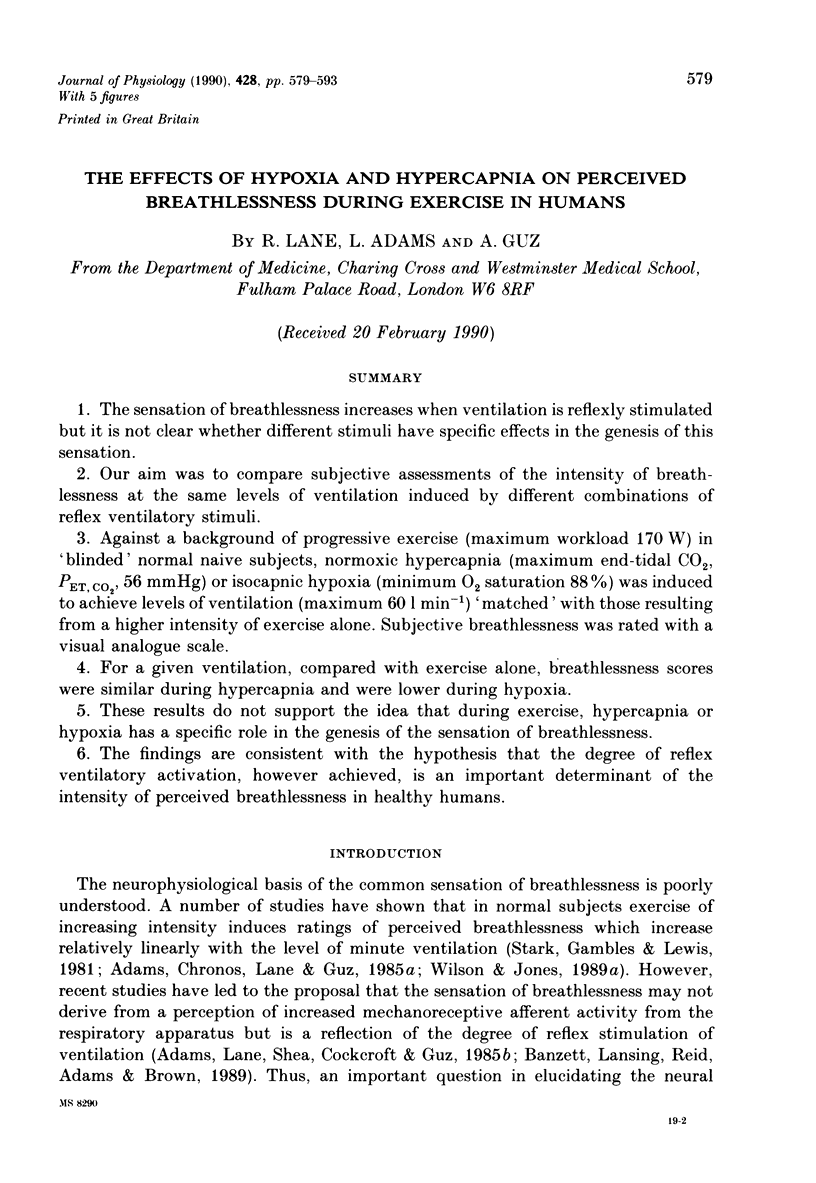
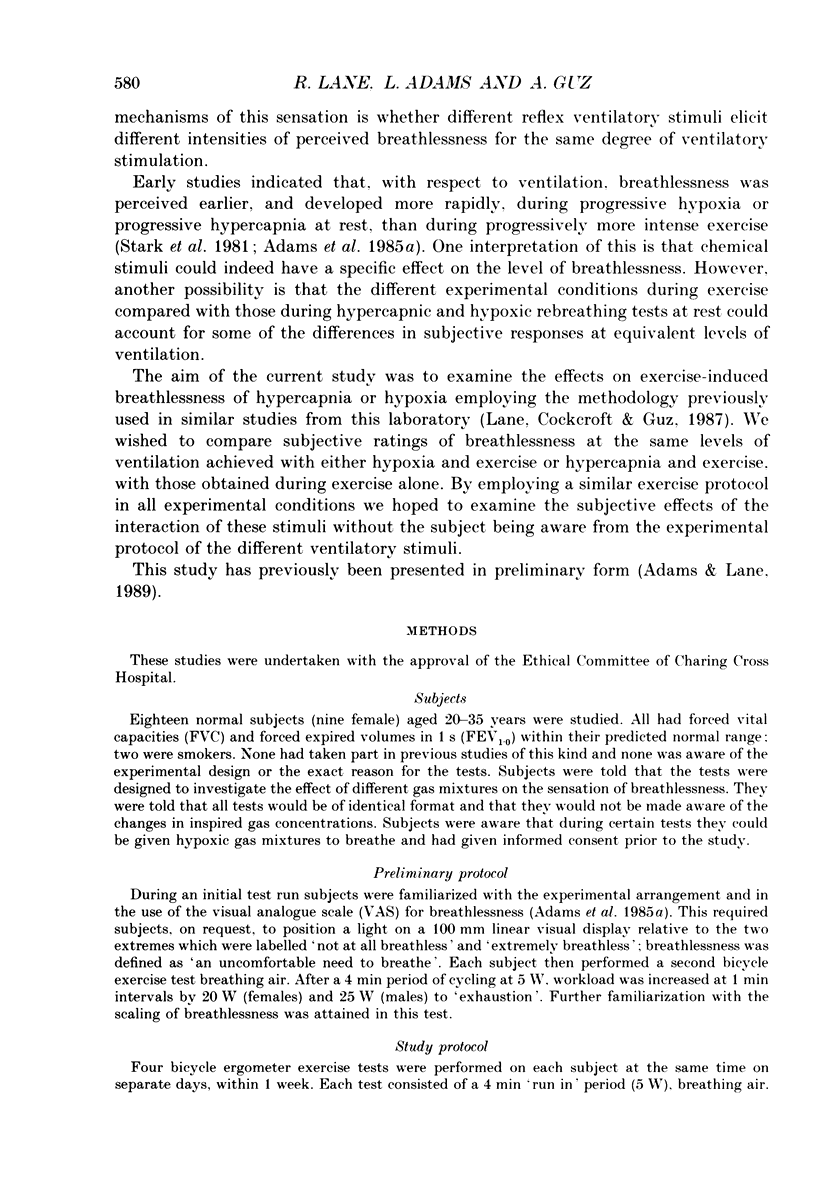
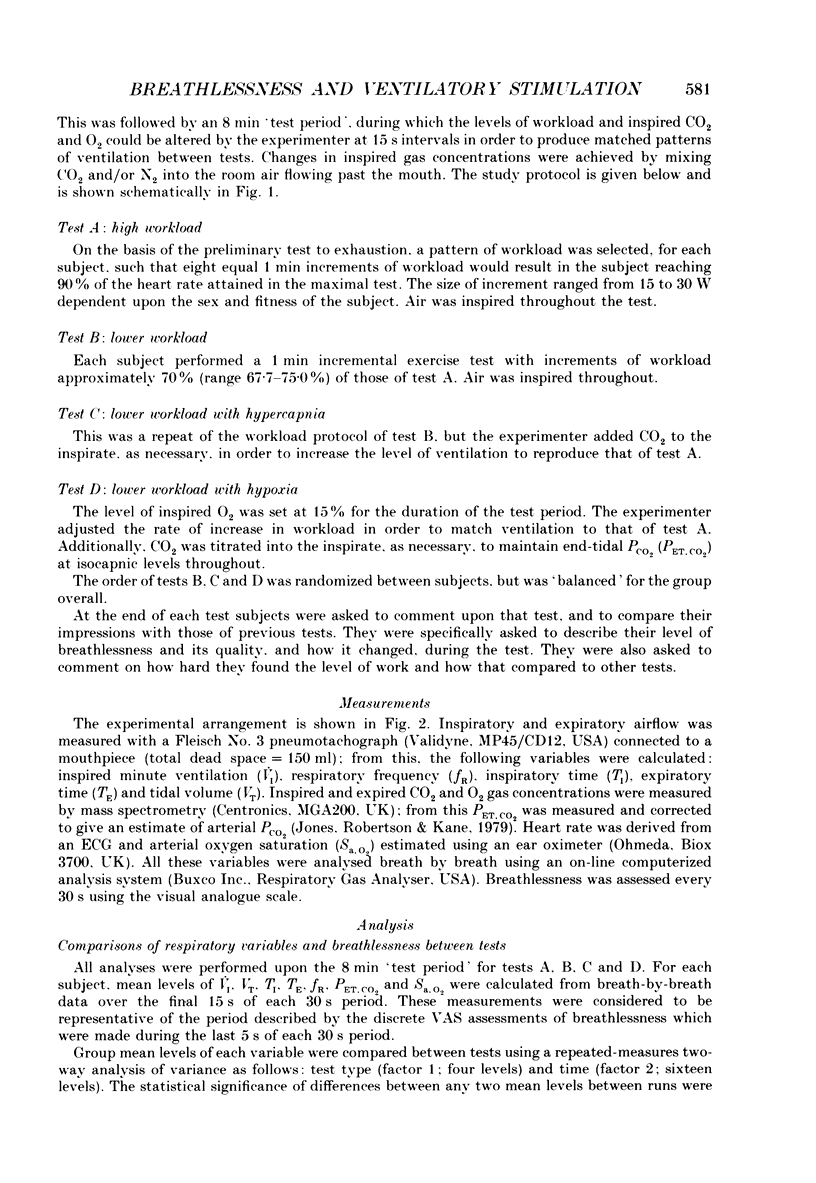
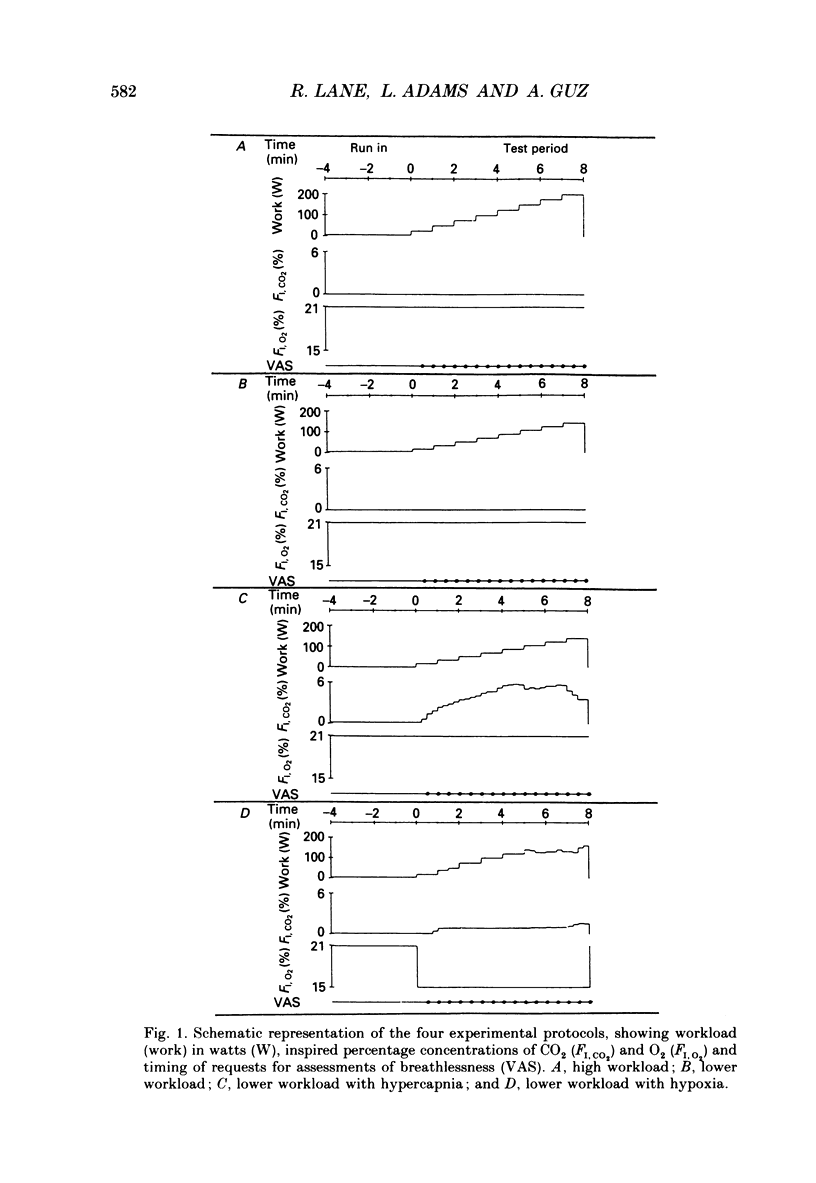
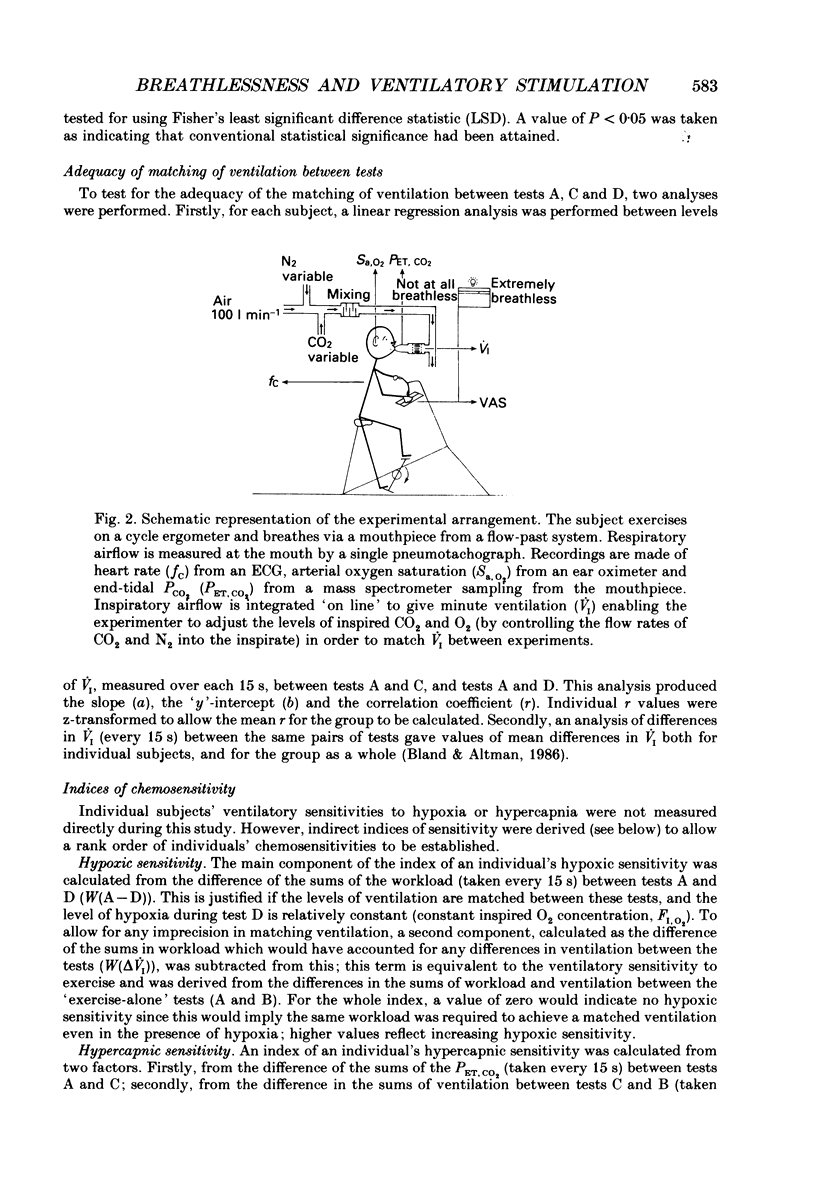

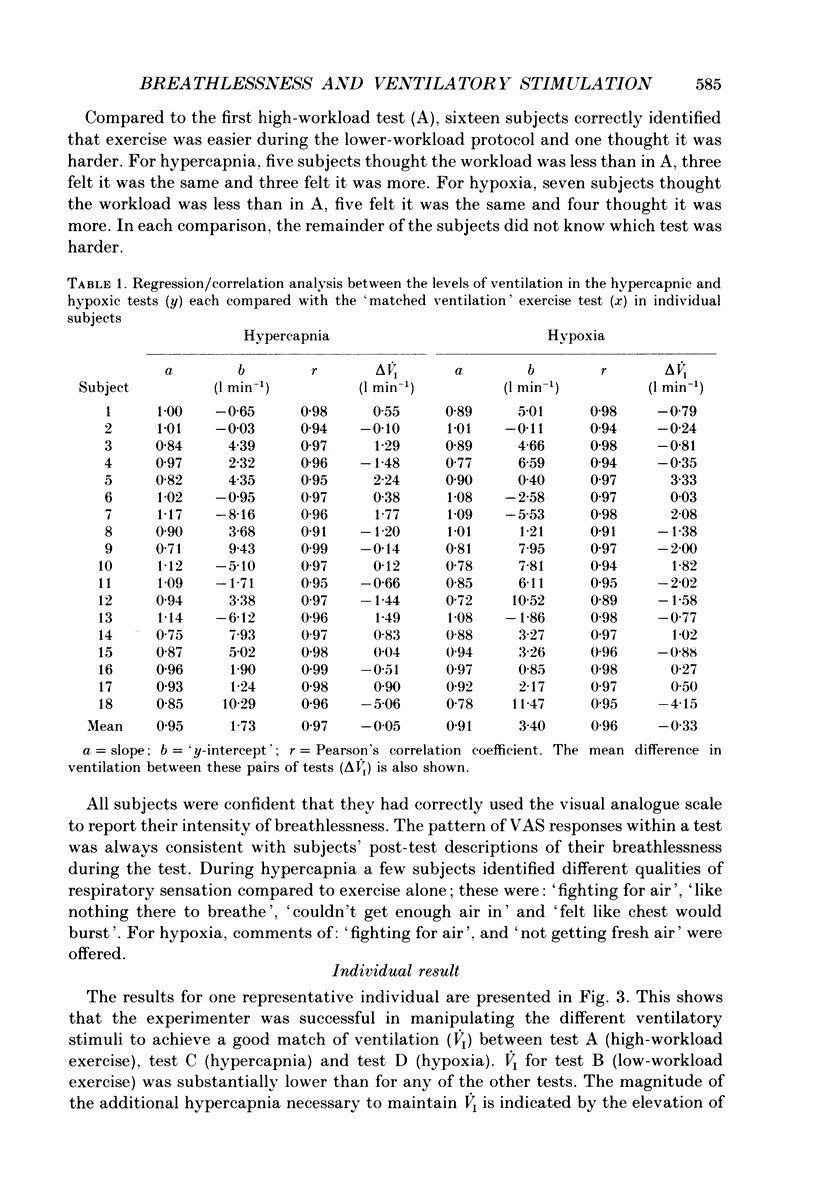
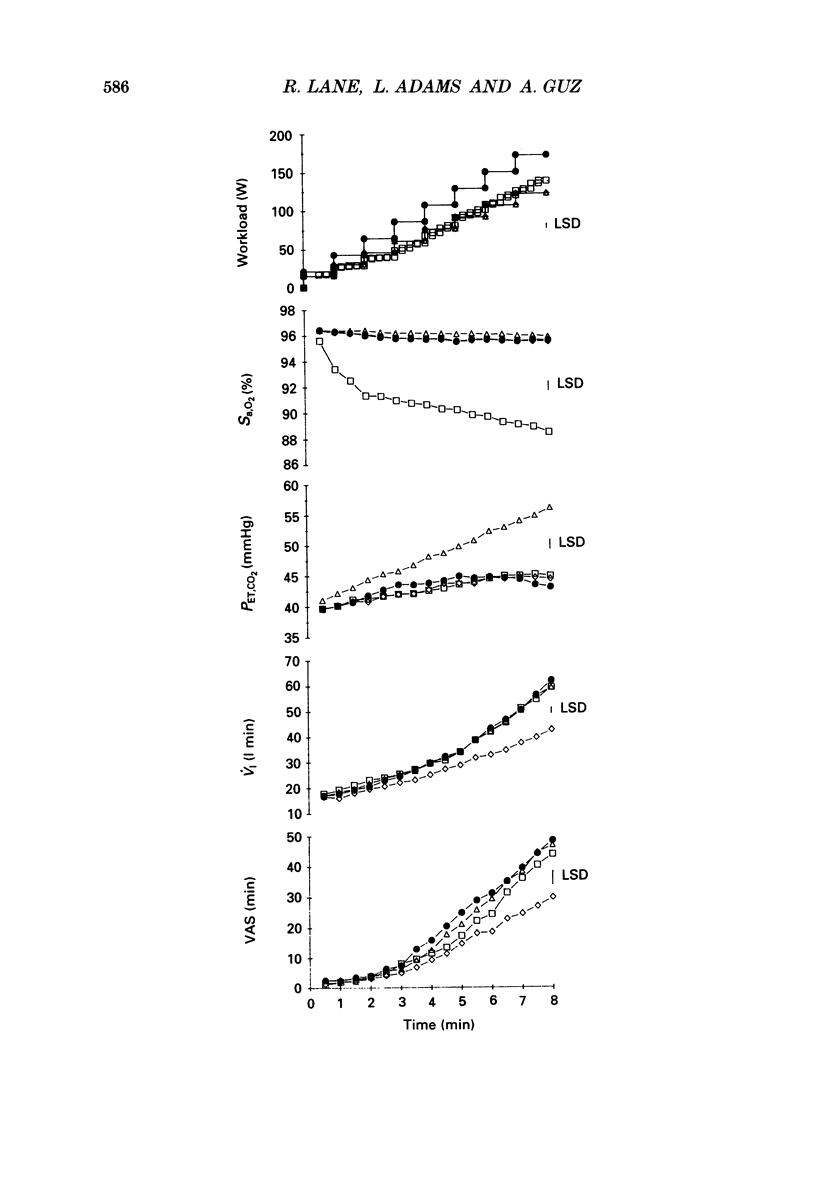
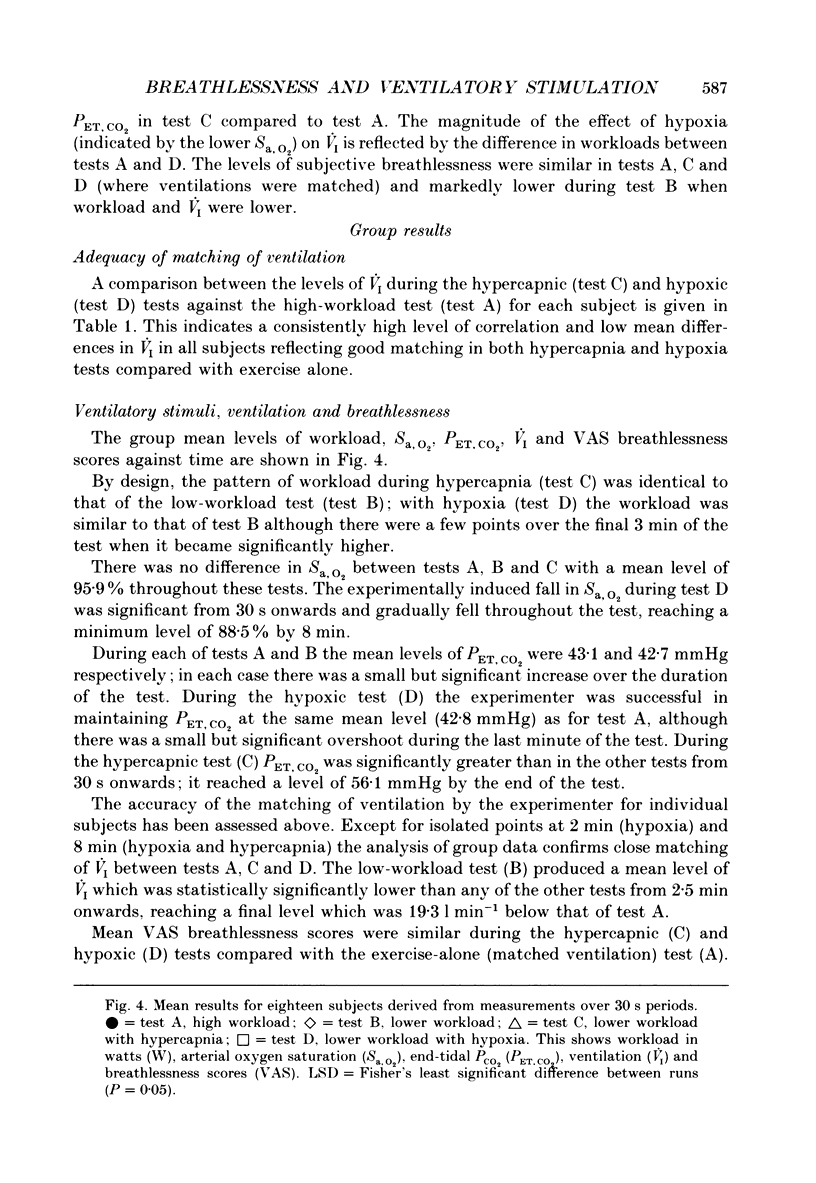
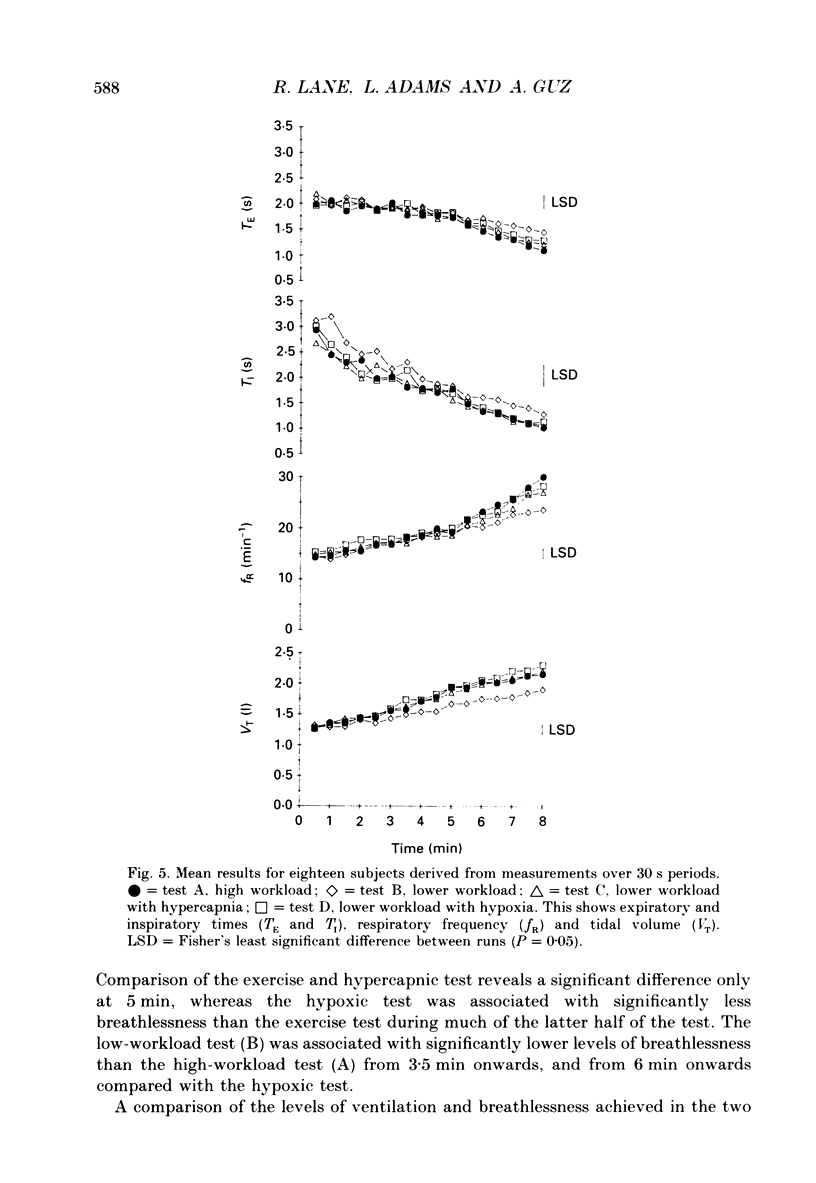
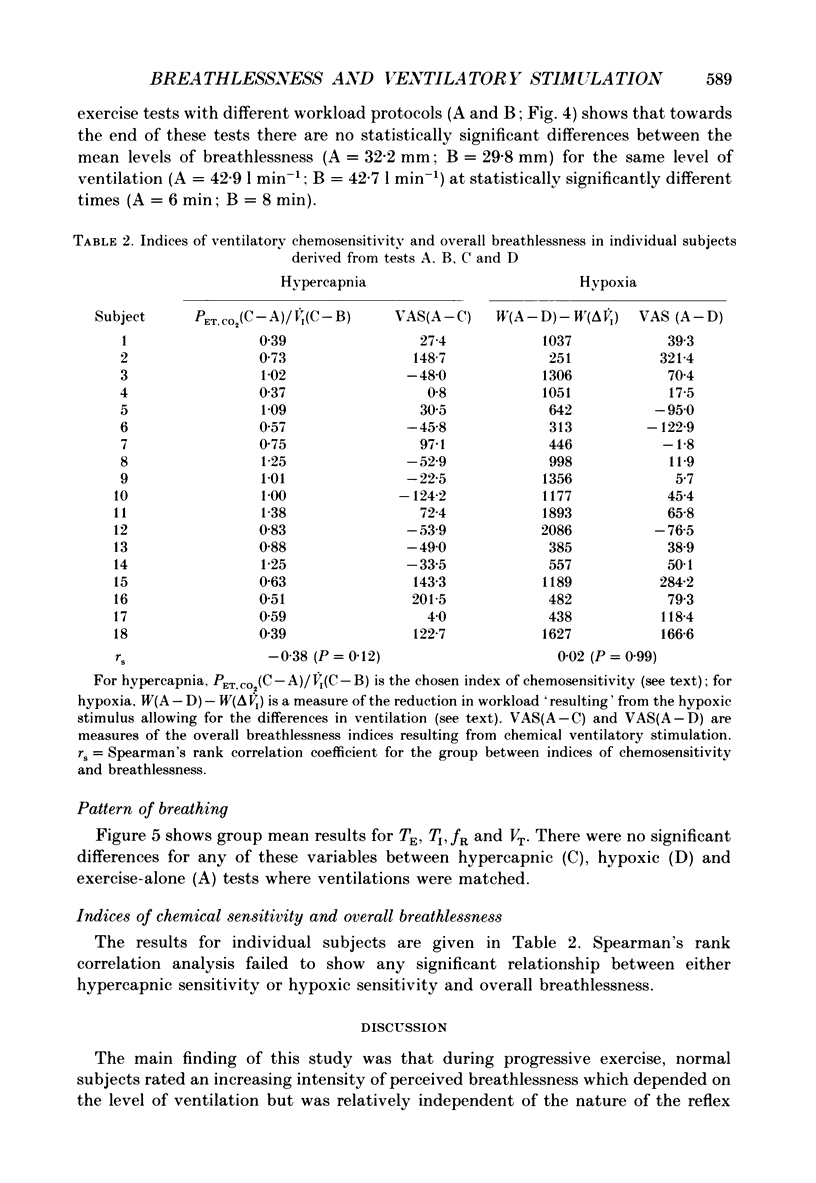
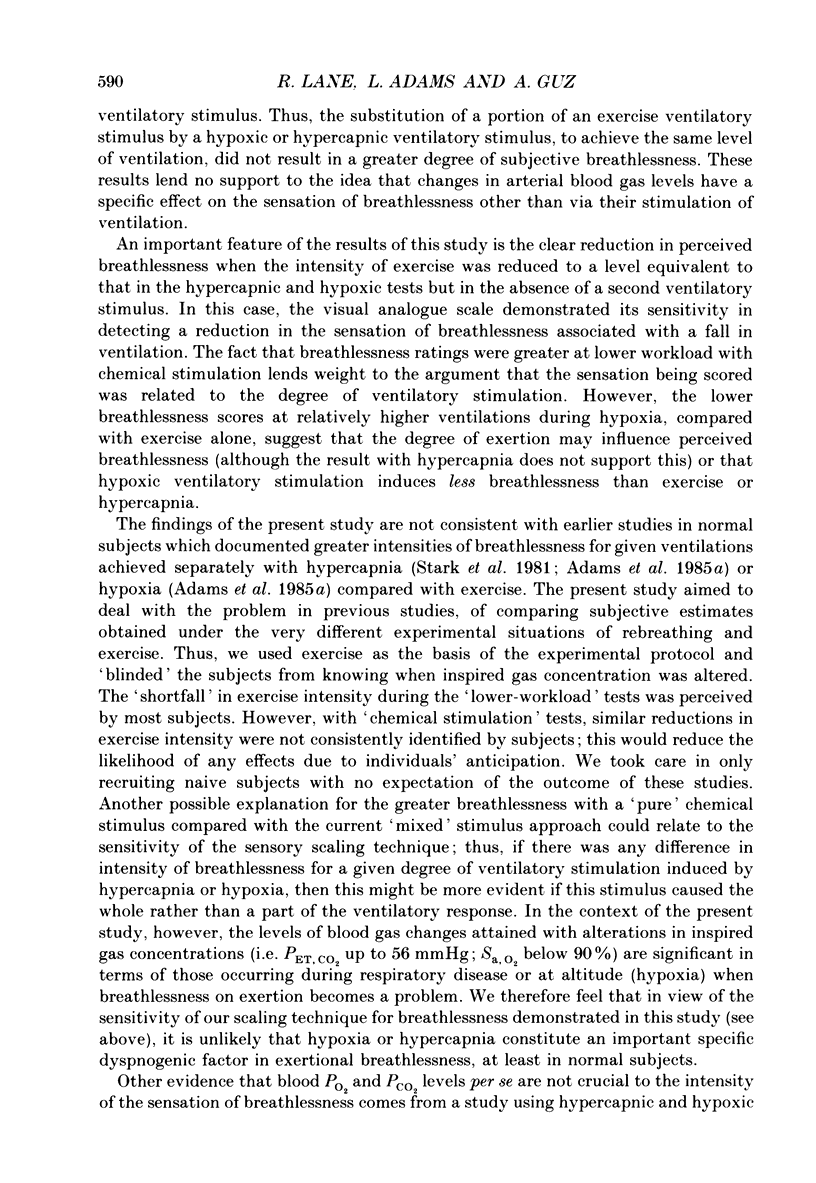
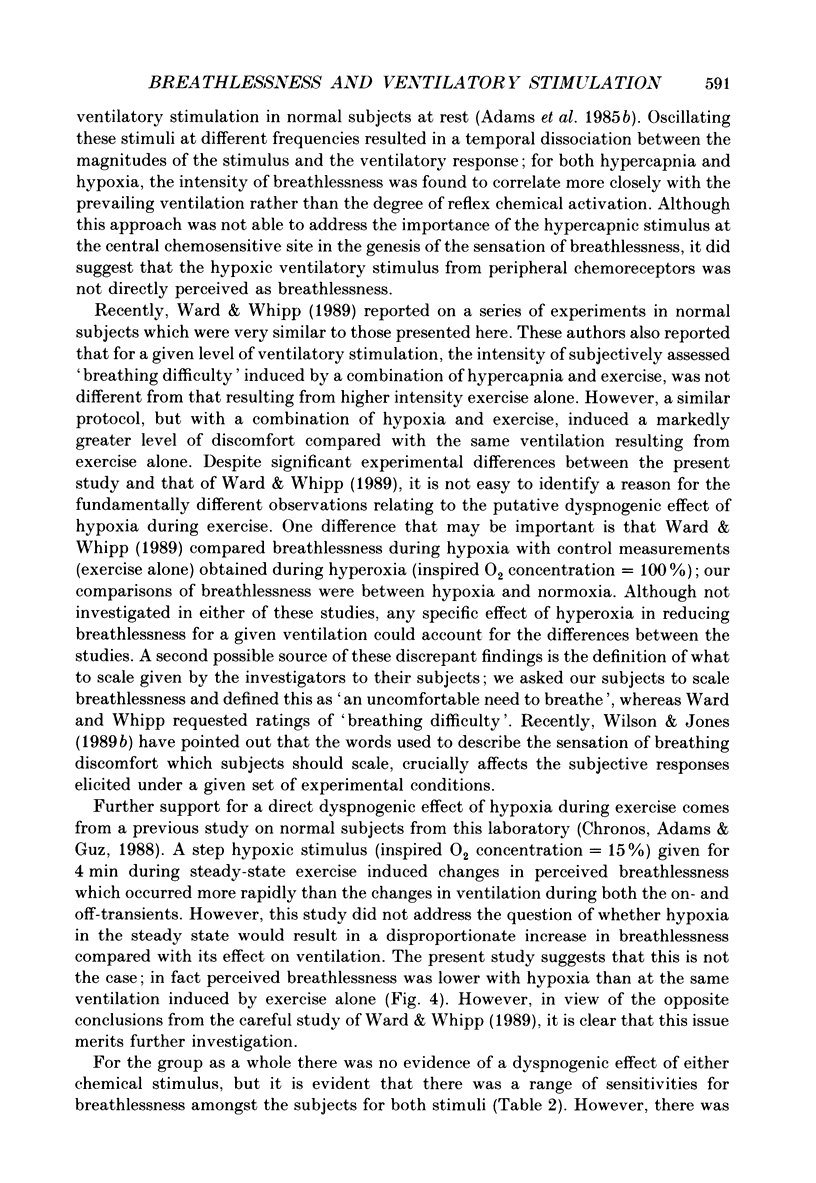

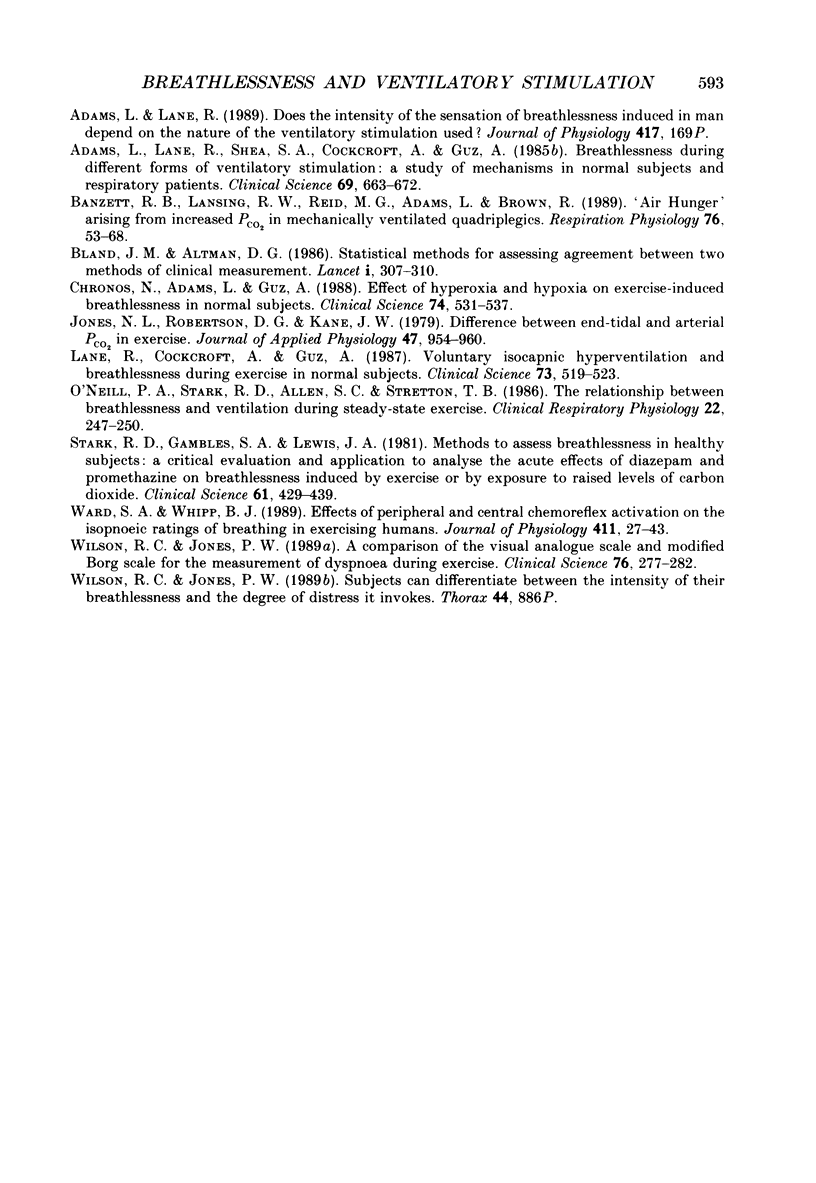
Selected References
These references are in PubMed. This may not be the complete list of references from this article.
- Adams L., Chronos N., Lane R., Guz A. The measurement of breathlessness induced in normal subjects: validity of two scaling techniques. Clin Sci (Lond) 1985 Jul;69(1):7–16. doi: 10.1042/cs0690007. [DOI] [PubMed] [Google Scholar]
- Adams L., Lane R., Shea S. A., Cockcroft A., Guz A. Breathlessness during different forms of ventilatory stimulation: a study of mechanisms in normal subjects and respiratory patients. Clin Sci (Lond) 1985 Dec;69(6):663–672. doi: 10.1042/cs0690663. [DOI] [PubMed] [Google Scholar]
- Banzett R. B., Lansing R. W., Reid M. B., Adams L., Brown R. 'Air hunger' arising from increased PCO2 in mechanically ventilated quadriplegics. Respir Physiol. 1989 Apr;76(1):53–67. doi: 10.1016/0034-5687(89)90017-0. [DOI] [PubMed] [Google Scholar]
- Bland J. M., Altman D. G. Statistical methods for assessing agreement between two methods of clinical measurement. Lancet. 1986 Feb 8;1(8476):307–310. [PubMed] [Google Scholar]
- Chronos N., Adams L., Guz A. Effect of hyperoxia and hypoxia on exercise-induced breathlessness in normal subjects. Clin Sci (Lond) 1988 May;74(5):531–537. doi: 10.1042/cs0740531. [DOI] [PubMed] [Google Scholar]
- Jones N. L., Robertson D. G., Kane J. W. Difference between end-tidal and arterial PCO2 in exercise. J Appl Physiol Respir Environ Exerc Physiol. 1979 Nov;47(5):954–960. doi: 10.1152/jappl.1979.47.5.954. [DOI] [PubMed] [Google Scholar]
- Lane R., Cockcroft A., Guz A. Voluntary isocapnic hyperventilation and breathlessness during exercise in normal subjects. Clin Sci (Lond) 1987 Nov;73(5):519–523. doi: 10.1042/cs0730519. [DOI] [PubMed] [Google Scholar]
- O'Neill P. A., Stark R. D., Allen S. C., Stretton T. B. The relationship between breathlessness and ventilation during steady-state exercise. Bull Eur Physiopathol Respir. 1986 May-Jun;22(3):247–250. [PubMed] [Google Scholar]
- Stark R. D., Gambles S. A., Lewis J. A. Methods to assess breathlessness in healthy subjects: a critical evaluation and application to analyse the acute effects of diazepam and promethazine on breathlessness induced by exercise or by exposure to raised levels of carbon dioxide. Clin Sci (Lond) 1981 Oct;61(4):429–439. doi: 10.1042/cs0610429. [DOI] [PubMed] [Google Scholar]
- Ward S. A., Whipp B. J. Effects of peripheral and central chemoreflex activation on the isopnoeic rating of breathing in exercising humans. J Physiol. 1989 Apr;411:27–43. doi: 10.1113/jphysiol.1989.sp017557. [DOI] [PMC free article] [PubMed] [Google Scholar]
- Wilson R. C., Jones P. W. A comparison of the visual analogue scale and modified Borg scale for the measurement of dyspnoea during exercise. Clin Sci (Lond) 1989 Mar;76(3):277–282. doi: 10.1042/cs0760277. [DOI] [PubMed] [Google Scholar]


